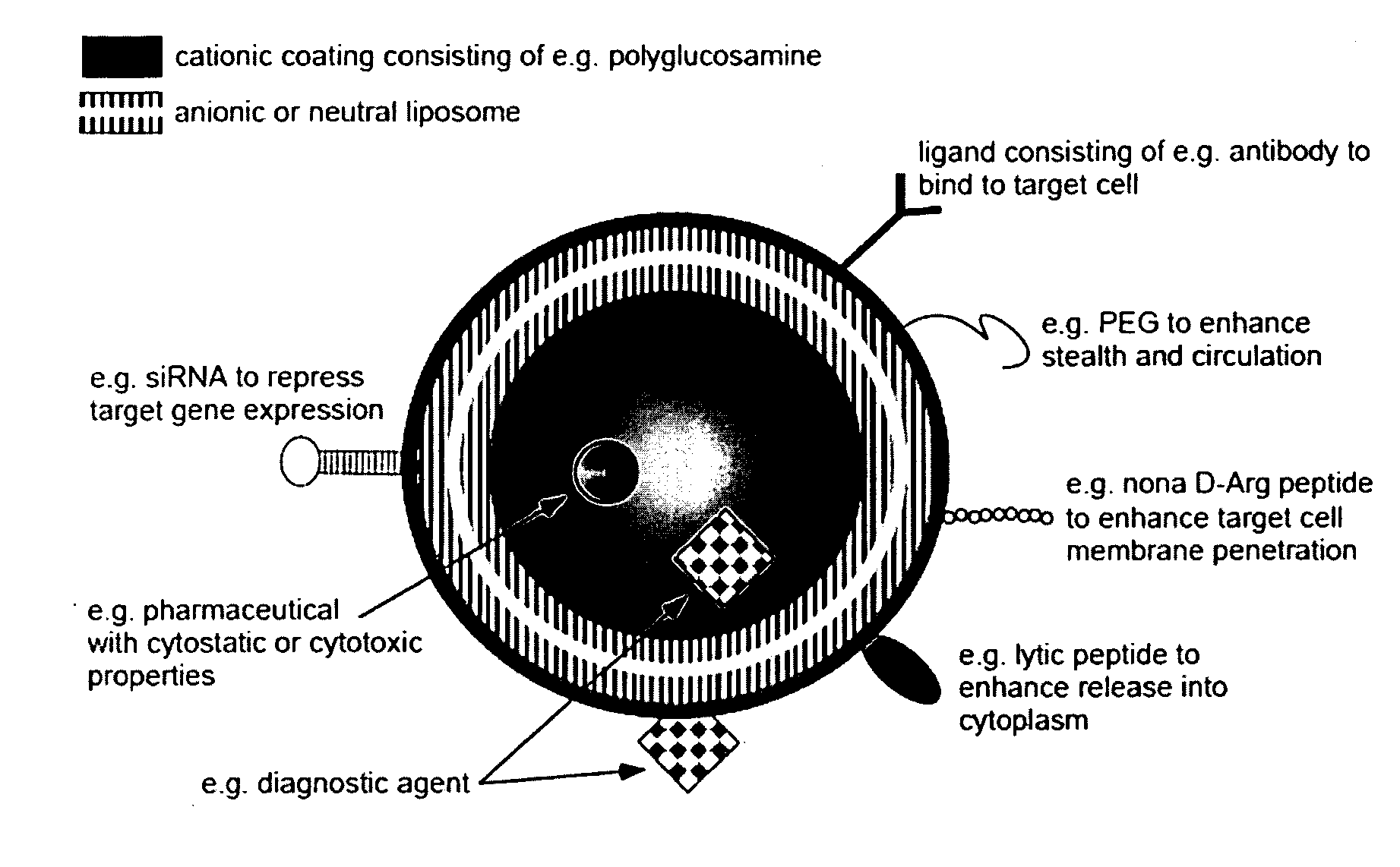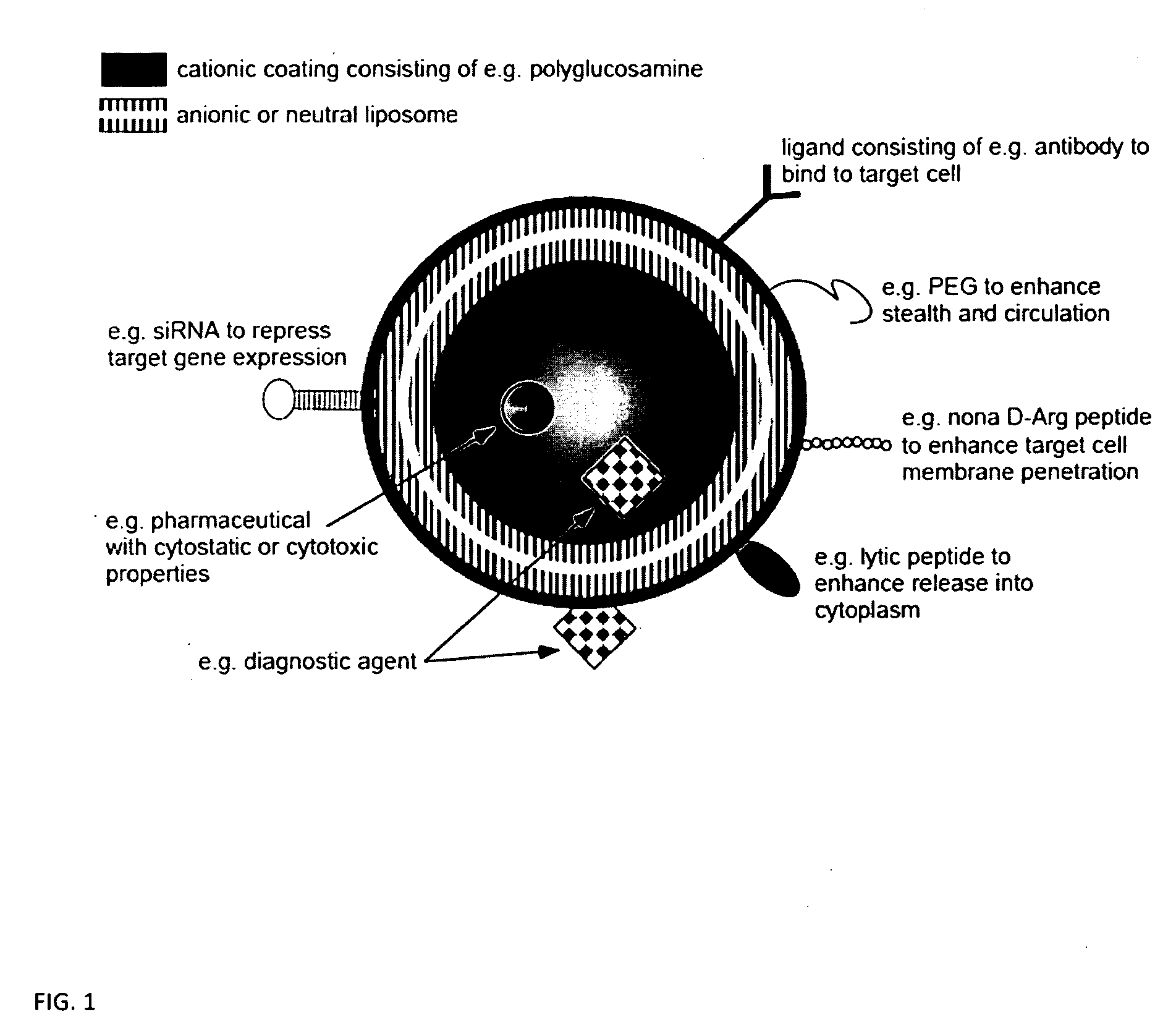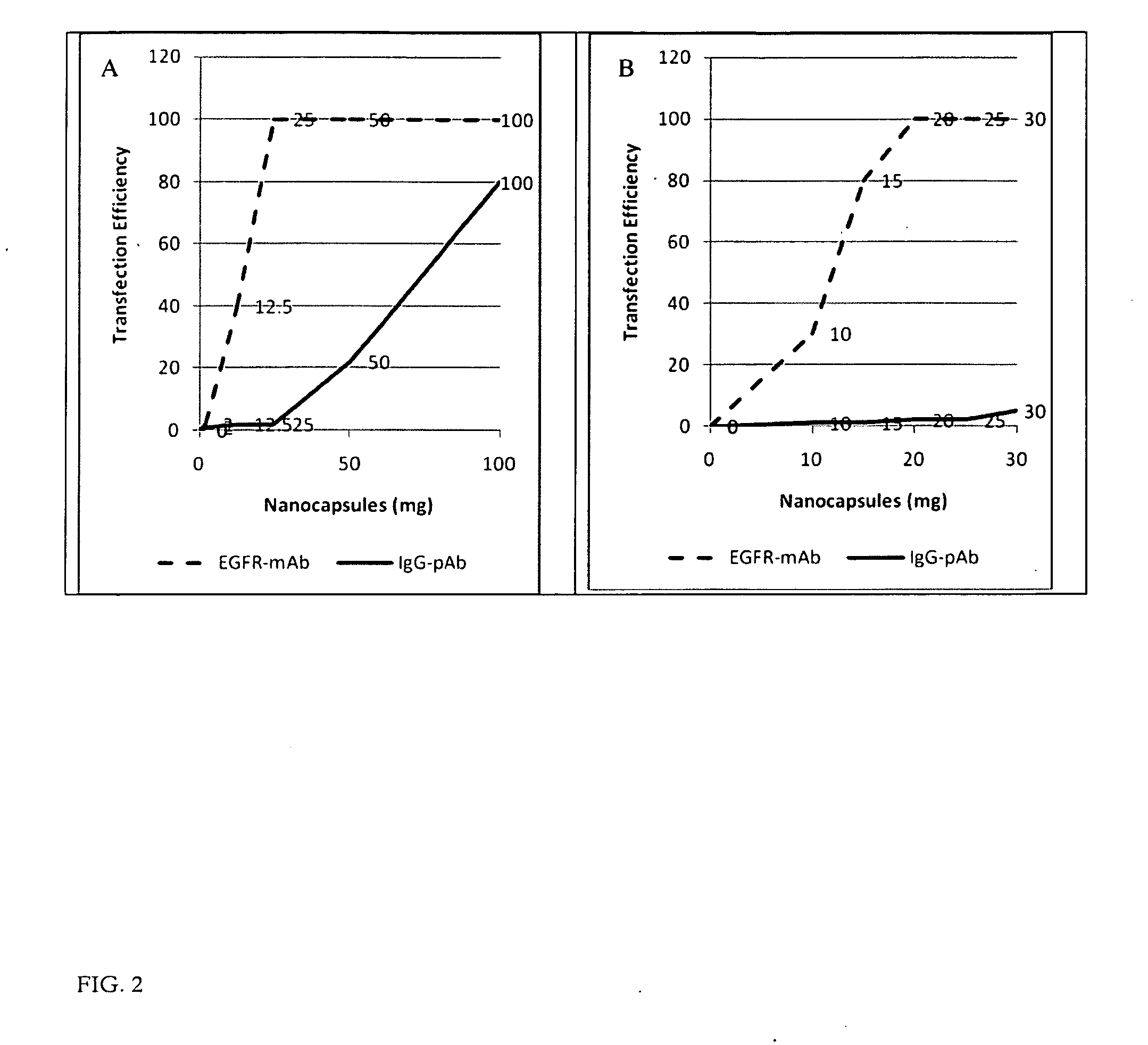Ligand Targeted Nanocapsules for the delivery of RNAi and other Agents
- Summary
- Abstract
- Description
- Claims
- Application Information
AI Technical Summary
Benefits of technology
Problems solved by technology
Method used
Image
Examples
example 1
[0056]Delivery of RNAi (such as siRNA, shRNA, miRNA)
[0057]In this preliminary experiment we discovered that polysaccharide nanocapsules having an antibody such as EGFR covalently attached on the surface can substantially increase the nanocapsule affinity for the target compared to the non targeted counterparts. The nanocapsules directed against the receptor can efficiently bind to and become internalized by cancer cells, resulting in targeted intracellular drug delivery. These targeted nanocapsules efficiently bind to and become internalized by cancer cells in vitro, resulting in targeted intracellular drug delivery of siRNA.
[0058]While the principle of antibody-conjugates to target cancer cells has been around for some time, in melanoma this strategy poses an additional problem due to the scarcity of suitable cell surface targets that are required for our specific system. Melanoma markers are generally comprised of 4 types (adapted from Medic S, Pearce R L, Heenan P J and Ziman M. ...
example 2
Delivery of Chemotherapeutic Agent
[0085]siRNA holds great promise as it allows specific functional knock-down of critical genes that drive tumor growth and / or survival. However, at the same time, these antibody-conjugated nanocapsules may also be exceptionally suited to deliver extreme localized (because to cancer cells only) chemotherapeutics. The most frequently given drug for advanced stage melanoma is Dacarbazine (DAC). Unlike other chemotherapeutics such as Doxorubicin (DOX), which is essentially ineffective, DAC has produced response rates in the 10-20% range and in rare cases complete remissions have been observed in melanoma patients. Generally, these responses do not result in increased survival and only provide temporary results (McLoughlin J M, Zager J S, Sondak V K, Berk L B. Treatment Options for Limited or Symptomatic Metastatic Melanoma. Cancer Control 15:239, 2008). It is conceivable that targeted delivery of chemotherapeutics with our nanocapsules is much more effic...
PUM
 Login to View More
Login to View More Abstract
Description
Claims
Application Information
 Login to View More
Login to View More - R&D
- Intellectual Property
- Life Sciences
- Materials
- Tech Scout
- Unparalleled Data Quality
- Higher Quality Content
- 60% Fewer Hallucinations
Browse by: Latest US Patents, China's latest patents, Technical Efficacy Thesaurus, Application Domain, Technology Topic, Popular Technical Reports.
© 2025 PatSnap. All rights reserved.Legal|Privacy policy|Modern Slavery Act Transparency Statement|Sitemap|About US| Contact US: help@patsnap.com



